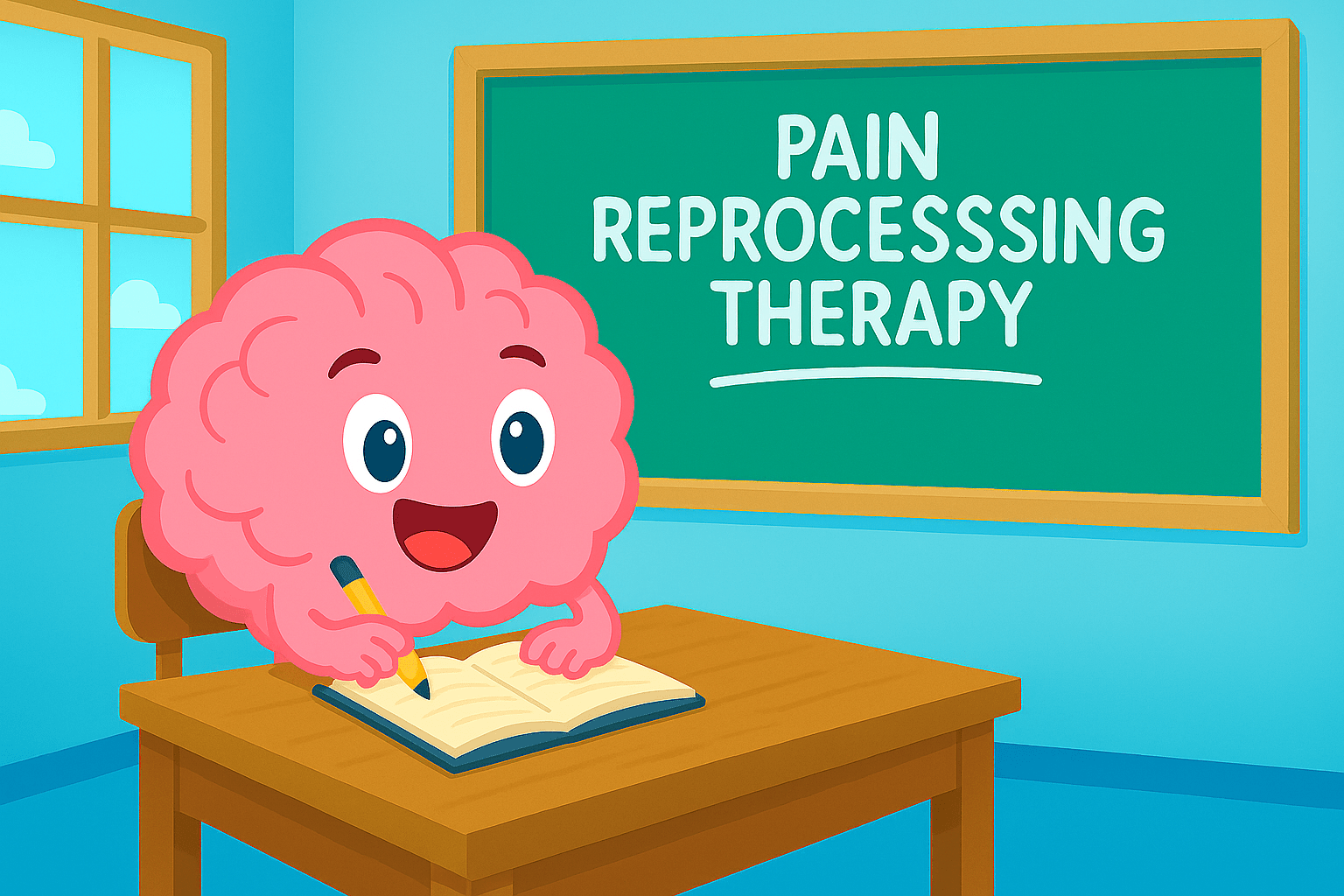Pain Reprocessing Therapy (PRT) is a breakthrough, science-backed approach to treating chronic pain by addressing its root cause: the brain’s misfiring of danger signals.
Instead of only managing symptoms, PRT helps the brain rewire its pain pathways, allowing the body to relax out of its protective response, stop firing alarm signals, and begin to heal.
Why Traditional Treatments Often Fall Short
When pain persists beyond the normal course of healing and no structural cause is found, traditional treatments like medications, injections, or surgeries often don’t provide lasting relief.
That’s because these treatments target the body, when in many cases, the problem is rooted in the nervous system’s response to perceived danger.
The Brain’s Role in Chronic Pain
All pain is real. But not all pain stems from tissue damage. In many chronic cases, pain continues because the brain has learned to stay on high alert.
This is known as neuroplastic pain—and it’s driven by an overprotective nervous system. Neuroplastic pain results from the brain misinterpreting safe messages from the body as if they were dangerous. The body is safe, and the pain is just a false alarm.
Neuroplasticity—the brain’s ability to change and adapt—means just as pain can be learned, it can also be unlearned. That’s where PRT comes in.
A message from our founder: A chronic foot pain patient was preparing for a fourth elective surgery before finding PRT. To manage pain, he tended to stay off his feet as much as possible. As the pain had mostly subsided from minimal impact to the foot, the patient decided to take a walk to make sure his pain was indeed still there and that surgery was the right path. He described wanting the pain to come on, almost excited to feel the sensation again so he could reassure himself before surgery. And funny enough, the pain never did appear. The patient had always approached his pain with trepidation, preoccupation, and worry. Shifting this perspective to an empowered, “bring it on” stance cut the fuel for the pain entirely—fear.
What Is Pain Reprocessing Therapy (PRT)?
PRT is a structured, therapeutic approach that helps people:
- Uncover the root cause of their chronic symptoms
- Reframe fear-based thoughts around pain
- Use tools like somatic tracking to attend to pain with curiosity and safety
- Regulate emotional responses and reduce stress-based triggers
The goal in PRT is to retrain the brain to interpret signals from the body accurately, reducing or eliminating pain. In a randomized clinical trial, 98% of chronic pain patients improved, with 66% becoming pain-free or nearly pain-free after eight sessions of PRT.
The 5 Key Components of PRT
- Education — Learn how the brain creates and sustains pain through misinterpreted signals
- Evidence — Gather and reinforce personalized evidence for the brain origins and reversibility of pain
- Somatic Exercises — Reappraise pain sensations through a lens of safety
- Emotional Regulation — Process emotions that may be contributing to pain by maintaining the fight or flight state
- Positive Sensations — Engage in safe movement and gravitate to positive feelings to support new neural pathways
Explore more in: How PRT Helps You Unlearn Chronic Pain
What Makes PRT Different?
Unlike many chronic pain treatments that rely on external solutions, PRT focuses on the internal system that creates and sustains pain: the brain.
- Safe and effective
- Non-invasive
- Grounded in neuroscience and proven through clinical trials
Who Can Benefit from PRT?
PRT is effective for many types of chronic pain, especially when there is no clear structural cause. Examples include:
- Back and neck pain
- Migraines and tension headaches
- Fibromyalgia
- Pelvic pain
- Irritable bowel syndrome (IBS)
- TMJ and jaw pain
- Neuropathy
- Unexplained pain flare-ups
See: Understanding Fibromyalgia: A Path to Relief
If your pain changes with stress, seems inconsistent, or worsens without clear reason, it is likely neuroplastic, and PRT can help.
Explore: Is PRT Right for Me?
Use our Glossary of PRT Terms to explore key concepts.
Where to Start
👉 Explore 1-on-1 therapy at WellBody Psychotherapy
Final Thought
You’re not imagining your pain. But you may be able to harness the power of your brain to rewire it.
PRT offers a hopeful, evidence-based path forward for those who feel stuck, misunderstood, or out of options.
If you’re looking for individual support along your recovery journey, explore WellBody Psychotherapy. Our one-on-one sessions offer clinically proven Pain Reprocessing Therapy methods to help you:
- Learn to interpret body signals accurately.
- Rewire how your brain processes painful sensations.
- Break the cycle of chronic pain.
- Develop strategies to manage stress, anxiety, and other psychological danger signals.

